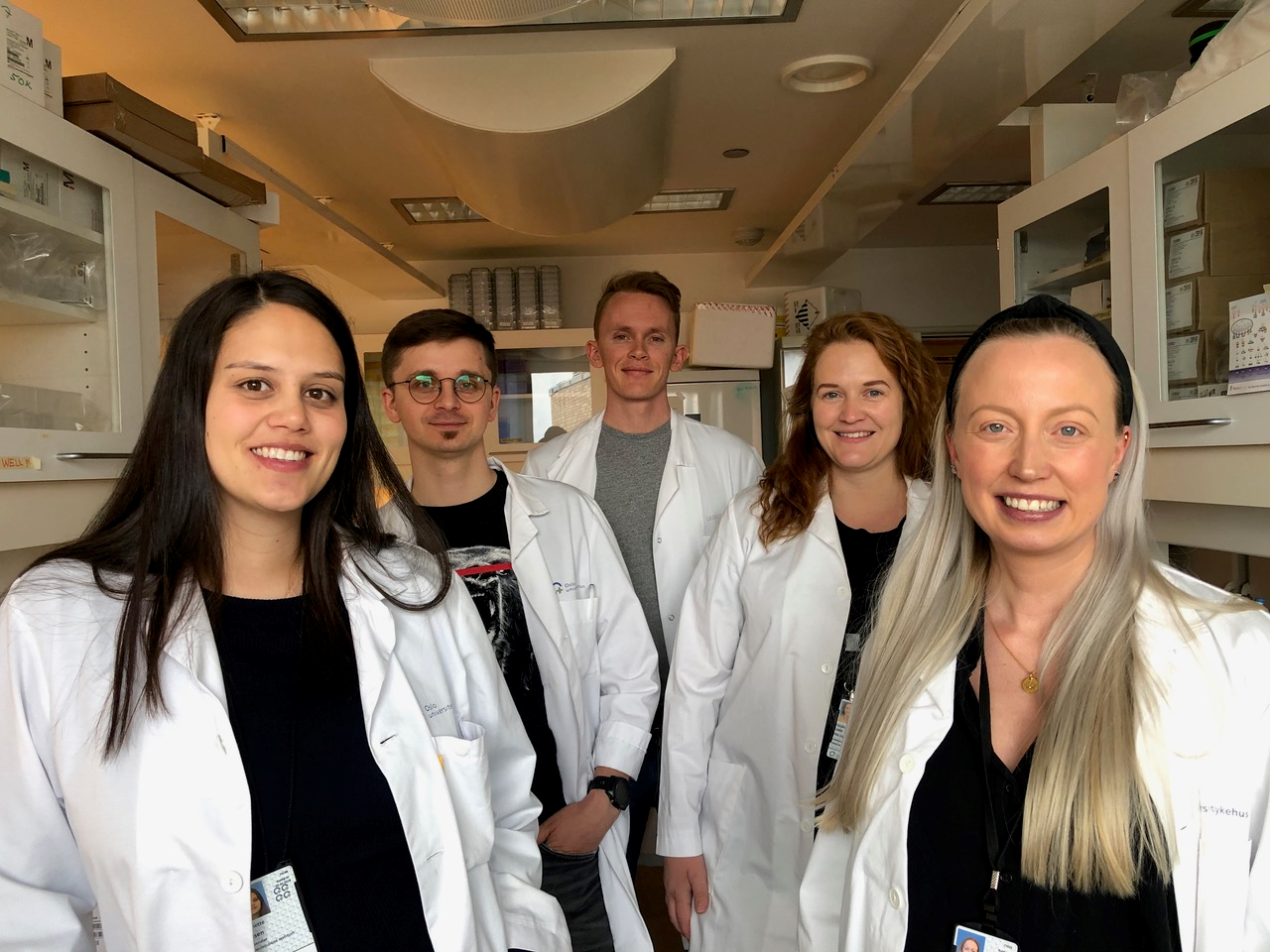A novel biomedical technology that enhances half-life and mucosal delivery
Ideally, protein-based biologics could be given transmucosally, rather than intravenously or subcutaneously, but the efficiency of transmucosal drug uptake is poor. In addition, many protein-based biologics hamper from short plasma half-life.
Scientists at University of Oslo and Oslo University Hospital, in collaboration with international researchers in Italy, Germany and US, have developed a biomedical technology that solves these major challenges.
PRESS RELEASE 2020-14-10
The therapeutic utility of many protein-based biologics is hampered by poor pharmacokinetics. Also, many of biologics that reach the market require frequent administration, which is a burden for the patients, their families and the healthcare system. Thus, there is an unmet need for rational molecular design that improves serum persistence and bio-distribution.
There is also an unmet need for needle-free delivery of protein-based biologics across mucosal barriers, but the efficiency of unassisted transmucosal transport is very poor. Improvements will allow for less frequent drug administration, increased patient compliance, and the biologics may be more cost- effective.
Scientists at University of Oslo and Oslo University Hospital, in collaboration with international researchers in Italy, Germany and US, have developed a biomedical technology that solves these major challenges.
The study, which is published in the journal Science Translational Medicine, reports on engineered of a human albumin variant that when fused to protein-based biologics results in extended half-life as well as improved delivery across lung tissues.
The Super Albumin Technology should be attractive in design of both invasive and non-invasive drug delivery strategies. See a short video clip explaining the technology.
The human albumin carrier is designed by engineering the interaction with the neonatal Fc receptor (FcRn), which is pivotal in regulation of albumin homeostasis. Improved binding to this receptor secures favorable transport properties that increases rescue from degradation in vivo, and enhances transport across mucosal surfaces for delivery to tissue and blood.
Importantly, the study reports on systematic studies in humanized mouse models, which provide guidelines for how human albumin based strategies should be performed pre-clinically.
The research has been led by the Laboratory of adaptive immunity and homeostasis, headed by Professor Jan Terje Andersen:
“We strongly believe that the technology platform can be of great value in tailoring of the pharmacokinetic properties of a range of protein-based candidate biologics. In particular, the ability of the engineered human albumin to be shuttled across mucosal surfaces is encouraging and opens new doors for exploring needle-free delivery”, says Jan Terje Andersen.
The versatile technology should be of significance in design of the next-generation of biologics with favorable serum persistence and bio-distribution, targeting a range of indication, which may increase patient compliance and be more feasible for both the patients and healthcare providers.
The study was funded by the Research Council of Norway and South-Eastern Norway Regional Health Authority.

Members of the Laboratory of Adaptive Immunity and Homeostasis that have contributed to the
research: from left Jeannette Nilsen, Algirdas Grevys, Torleif Tollefsrud Gjølberg. Heidrun Elisaberth
Lode and Malin Bern. Photo: Simone Mester
The publication in Science Translational Medicine:
An engineered human albumin enhances half-life and transmucosal delivery when fused to protein-based biologics
Malin Bern, Jeannette Nilsen, Mattia Ferrarese, Kine M. K. Sand, Torleif T. Gjølberg, Heidrun E. Lode, Robert J. Davidson, Rodney M. Camire, Espen S. Bækkevold, Stian Foss, Algirdas Grevys, Bjørn Dalhus, John Wilson, Lene S. Høydahl, Gregory J. Christianson, Derry C. Roopenian, Tilman Schlothauer, Terje E. Michaelsen, Morten C. Moe, Silvia Lombardi, Mirko Pinotti, Inger Sandlie, Alessio Branchini and Jan Terje Andersen.
Science Translational Medicine 14 Oct 2020:
Vol. 12, Issue 565, eabb0580
DOI: 10.1126/scitranslmed.abb0580
Video going through the technology:
For more information, please contact:
Jan Terje Andersen, professor in biomedical innovation
Institute of Clinical Medicine and Department of Pharmacology, University of Oslo, and Department of
Immunology, Oslo University Hospital Rikshospitalet, Norway.
E-mail: j.t.andersen@medisin.uio.no
https://www.ous-research.no/andersen/
https://www.med.uio.no/klinmed/personer/vit/janta/index.html
Facebook: https://www.facebook.com/AndersenLaboratory/
Twitter: @AndersenJT
We are seeking partners for co-development and licensing of the technology:
Gerbrand Koster, Technology strategy manager, gerbrand.koster@inven2.com
Kristin Sandereid, Executive fund and business developer: kristin.sandereid@inven2.com
https://www.inven2.com/lisensmulighet/an-optimized-engineered-albumin-for-half-life-extension-and-
mucosal-delivery-of-biologics/
